Volvo XC60 Vs Volvo XC90: Which Volvo SUV Is Right For You?
It can be argued that no automotive brand in the North American market has evolved in the past 30 years as much as Volvo.
In the early 1990s, the bestselling Volvo models were clunky, brick-shaped sedans and wagons with cabins that were mostly lined with rubber-coated foam. The basic shape of their cars remained unchanged from the 1960s into the 1990s and during those years, the brand was best-known for its drab design and incredible durability.
Fortunately, the Volvo brand today is nothing like the company from the 1990s, showcasing cutting-edge technology inside and out, with premium appointments and a sleek, elegant design. Today’s Volvo lineup is filled with proper luxury models, including sedans, wagons, and SUVs. Two of the most popular modern Volvos are the XC60 and the XC90, with these two roomy SUVs showcasing everything that the brand has to offer. These two models offer all of the premium features that you expect from a luxury SUV, but they cost quite a bit less than the competitors.
Get a Quote on a New Volvo XC60 or XC90If you are interested in the latest Volvo SUVs and are caught between the XC60 and XC90, you’ve come to the right place. In this article we break down both of Volvo’s flagships and help you zero in on the right Volvo SUV for your needs.
Cabin Space
The Volvo XC60 and XC90 both offer lots of interior space, but the XC60 is a two-row model while the XC90 has three rows of seating, with the buyer’s choice of a capacity of six or seven passengers. Shy of the third row, the interior measurements are very similar between the two, but there are some areas where each of them has an advantage.
XC60: The front seating area of the Volvo XC60 offers 38 inches (965 mm) of headroom, 58.2 inches (1,478 mm) of shoulder room, 41.5 inches (1,054 mm) of legroom, and 56.4 inches (1,432 mm) of hip room. Folks second in the second row enjoy 38 inches (965 mm) of headroom, 56.3 inches (1,430 mm) of shoulder room, 38 inches (965 mm) of legroom, and 55.4 inches (1,407 mm) of hip room.
XC90: The driver and front passenger of the Volvo XC90 gets 38.9 inches (988 mm) of headroom, 57.7 inches (1,465 mm) of shoulder room, 40.9 inches (1,039 mm) of legroom, and 56 inches (1,422 mm) of hip room. In the second row, passengers get 38.5 inches (978 mm) of headroom, 56.6 inches (1,438 mm) of shoulder room, 37 inches (940 mm) of legroom, and 56.5 inches (1,435 mm) of hip room. In the third row, there is 36.3 inches (922 mm) of headroom, 46.9 inches (1,191 mm) of shoulder room, 31.9 inches (810 mm) of legroom, and 44.9 inches (1,140 mm) of hip room.
Bottom Line: If you need space for more than five people, the Volvo XC90 is a clear choice, but if you don’t think that you will actually use the rear-most seats, the XC60 is the better choice in terms of space for passengers. The measurements for the first and second row between the two are similar, but the XC60 offers more legroom, which should be the deciding factor for those who won’t haul more than five people.
Cargo and Towing
The odds are good that if you are cross-shopping the Volvo XC60 and the Volvo XC90, towing isn’t a key concern, but each of these plush SUVs will safely pull enough weight to pull many of the most common recreational trailers. A smaller boat, jet skis, a motorcycle trailer or other smaller utility trailers are all within the capabilities of these two Volvos, but the bigger SUV does have an advantage.
XC60: The Volvo XC60 when properly equipped will tow up to 3,500 lb, regardless of the engine or drive configuration chosen. Whether it is the front- or all-wheel-drive T5 engine or the T6 with standard AWD, the towing capacity doesn’t change.
In terms of hauling abilities, the area behind the front seats of the Volvo XC60 offers 63.3 cu-ft (1,791 liters) of cargo capacity when the seats are folded down.
XC90: The Volvo XC90 with the T5 engine option has a towing capacity of 4,000 lb while the stronger T6 engine can tow up to 5,000 lb when the vehicle is properly equipped.
Also, thanks to the added space of the third row of seats, when you fold down all the seats behind the driver, the XC90 offers 85.7 cu-ft (2,425 liters) of cargo space.
Bottom Line: The Volvo XC90 has a big advantage in both cargo capacity and towing abilities, so if you plan to tow with any regularity, the bigger of these two SUVs is the better choice.
Technology and Features
The modern Volvo brand is one of the most impressive in technology, with a long list of standard features which are high-cost options on other luxury SUVs. The interior is the area where the Volvo brand has improved the most in the last 30 years, and both SUVs share a vast majority of cabin features.
XC60: The Volvo XC60 comes with an incredibly long list of standard features, starting with the 12-inch digital gauge cluster, a 9.0-inch infotainment screen system, and plush leather surfaces throughout the cabin. The “base model” XC60 Momentum also comes with dual-zone climate control, a panoramic moonroof with a power sunshade, power adjustment for the front seats, voice control of the infotainment system, Apple and Android smartphone connectivity via Bluetooth, a leather-wrapped steering wheel with a full spread of buttons to control the interior functions, the driver-adjustable steering system, HD radio, SiriusXM radio, and a 220-watt, 10-speaker sound system. Rain sensing wipers, a rearview camera system, and the rear parking alert system are also standard.
SEE ALSO: 2020 Volvo V60 T8 Review: A Tough DecisionWhen you step up to either the R Design version of the XC60, you get heated front seats with front leg cushion extensions, rear power folding headrests, four-zone climate control, Sensus navigation, the Front Park Assist system, premium interior lighting, and a 600-watt, 14-speaker Harman Kardon sound system. The Inscription models add all the components of the R Design, along with cooled front seats with adjustable side bolsters.
XC90: The Volvo XC90 also comes with a long list of standard features, many of which are shared with the XC60 across the same trim levels. However, the XC90 comes with a few upgrades over the XC60. The XC90 comes with the 12-inch gauge cluster, the 9-inch infotainment screen, and leather-wrapped everything throughout the cabin. The XC90 Momentum comes with leather seats with front power adjust, a leather steering wheel with system controls, the panoramic moonroof, a four-zone climate control system, a smartphone induction charging station, adaptive cruise control, voice control access, Apple and Android smartphone connectivity with Bluetooth, Pilot Assist, front parking assist, rear parking assist with the backup camera, rain-sensing wipers, and the 10-speaker, 220-watt sound system.
The XC90 R Design also comes with heated front seats, power-adjustable front seat leg cushions, Sensus navigation, rear sunshades, premium lighting, and the 600-watt, 14-speaker Harman Kardon sound system. The Inscription package comes with all the above in addition to cooled front seats with adjustable side bolsters.
Bottom Line: The list of interior features for the Volvo XC60 and Volvo XC90 are nearly identical, but the XC90 does have some advantages, such as the standard four-row climate control system, standard front parking assist system, and the Pilot Assist system. If technology is a big selling point for you, the XC90 has the edge.
Powertrain
Volvo offers the XC60 and XC90 with the exact same engine and drivetrain configurations across the board.
XC60: The Volvo XC60 is offered in T5 and T6 form. T5 models come with a turbocharged 2.0-liter four-cylinder engine that delivers 250 hp and 258 lb-ft of torque. An eight-speed automatic transmission and front-wheel drive are standard on XC60 T5 models, but all-wheel drive is optional, also with the eight-speed automatic. Those who want more power can opt for the T6 models, which come with a turbocharged and supercharged 2.0-liter four-cylinder engine, packing 316 horsepower and 295 lb-ft of torque. Both the 8-speed automatic transmission and all-wheel drive are standard on XC60 T6 models.
XC90: Volvo also offers the XC90 with T5 and T6 engine packages, which happen to be pretty much identical to the lineup for the XC60. The T5 is a turbocharged 2.0-liter, four-cylinder mill with 250 hp and 258 lb-ft of torque, with a standard 8-speed automatic and your choice of front- or all-wheel-drive. The T6 engine is a supercharged and turbocharged 2.0-liter with 316 hp, 295 lb-ft of torque, a standard eight-speed automatic, and standard all-wheel-drive.
Bottom Line: The engines, transmissions, and drivetrain layouts of these two Volvo SUVs are completely identical. The only real difference is that the XC60 is smaller and lighter, so the available power will lead to a slightly quicker SUV. If driving dynamics are a key concern, the XC60 has the edge.
Fuel Economy
If you are really concerned about fuel economy, you want to check out the XC60 Recharge or the XC90 Recharge, both of which come with standard hybrid powerplants, but the standard models offer solid fuel economy for vehicles of this size. They aren’t the most fuel-friendly models in their respective segments, but for fairly powerful SUVs, they offer reasonable fuel economy numbers, even with all-wheel-drive.
XC60: The Volvo XC60 with the T5 engine and front-wheel-drive is rated at 22 mpg around town, 29 on the highway, and 25 combined. The all-wheel-drive version of the XC60 T5 gets one tick less in each category with 21 around town, 28 on the highway, and 24 combined.
When you step up to the stronger T6 engine option with the standard all-wheel-drive system, the official fuel economy numbers once again drop across the board by just one unit, offering 20 mpg around town, 27 on the highway, and 23 mpg combined.
XC90: The Volvo XC90 with the T5 engine and front-wheel-drive is rated at 21 mpg around town, 30 on the highway, and 25 mpg combined. The T5 all-wheel-drive models get a rating of 20 mpg around town, 28 on the highway, and 23 mpg combined while the more powerful T6 all-wheel-drive models are expected to return 19 mpg around town, 28 on the highway, and 22 mpg combined.
Bottom Line: The larger Volvo XC90 has an advantage on the highway, but around town and in the combined column, the smaller XC60 offers better fuel economy figures. If you are concerned about miles per gallon, the smaller of these two Volvos makes more sense.
Safety
Every modern luxury car is as packed full of safety technology as it is infotainment technology, and the Volvo XC60 and XC90 are shining examples of how big luxury has come to include big standard safety. As is the case with many categories above, these two vehicles share just about every item in this category, showing that safety technology is a key concern of the Volvo brand.
XC60: The entry-level Volvo XC60 comes with the Whiplash Injury Protection System, the Side Impact Protection System, the Road Sign Information System, a driver’s knee airbag, inflatable curtain airbags, a lane-keeping aid, the Oncoming Lane Mitigation System, antilock brakes with Hill Start Assist and Automatic Hold systems, keyless entry, an alarm, a hands-free power tailgate, and the BLIS blind spot information system with Steer Assist and Cross Traffic Alert with auto-brake. The R Design and Inscription models come with all of that and a Homelink universal garage door opener.
SEE ALSO: 2021 Volvo XC40 Recharge Review: First DriveXC90: Every new Volvo XC90 also comes with the Whiplash Injury Protection System, the Side Impact Protection System, the Road Sign Information System, a driver’s knee airbag, inflatable curtain airbags, a lane-keeping aid, the Oncoming Lane Mitigation System, antilock brakes with Hill Start Assist and Automatic Hold systems, keyless entry, an alarm, a hands-free power tailgate and the BLIS blind spot information system with Steer Assist and Cross Traffic Alert with auto-brake. However, the XC90 also comes standard with the Homeline garage door opener and an auto-dimming rearview mirror on all models.
Bottom Line: The Volvo XC60 and XC90 are practically identical in terms of safety technology, but with a few extra standard items, the larger XC90 has the edge here.
Styling
Having read through all of the sections above, it should come as little surprise that the Volvo XC60 and XC90 look similar. Really, all of the modern Volvo products have a relatively similar exterior design language, but unlike the clunky, boxy shared designs of the 60s, 70s, and 80s, today’s Volvos are sleek and stylish with a premium look from front to rear.
XC60: Up front, the Volvo XC60 has angled headlights that flow back into the front fenders, with and distinctive LED accent running through the middle of the lens. On the inside, these high-tech headlights connect to a grille that is reminiscent of the old boxy Volvos, with the company logo in the middle and a single “beam” connecting vertically to the grille surround. From the side, the XC60 has a slippery silhouette, with a hood that slopes down at the front and a windshield angle that is on the aggressive side. The roofline never quite flattens out, quickly transitioning into the rear hatch over blackened pillars that create the floating roof look. At the rear, huge taillights cover much of the rear pillar, traveling down to flank the hatch.
XC90: The Volvo XC90 also has angled headlights with LED accents running through the middle, but the lenses on this larger SUV are a bit more angled, creating a slightly more modern look. The grille of the XC90 is pushed out a bit, separating it from the headlight lenses, with more aggressive styling through the lower portion of the front fascia. From the side, the XC90 has a flatted silhouette, from the hood to the extended roofline, but the various styling lines along the side are similar between the two. The biggest difference here is the longer wheelbase and larger rear door openings. Out back, the XC90 also has huge taillights that travel from the top of the pillars down to the rear fascia.
Bottom Line: If you are looking for an area to create some separation between the Volvo XC60 and XC90, you aren’t likely to find it in the exterior styling department. While there are some slight differences, if you like one, you will like the other, and to the untrained eye, these vehicles are interchangeable.
Pricing
The Volvo XC60 and Volvo XC90 are both luxury SUVs with loads of standard features, many of which are shared by key competitors. Where the Volvo stands apart from most luxury SUVs is in pricing, as both of these models have relatively low starting prices and similarly low premium pricing. Of course, with the differences in sizing comes some differences in pricing, along with some slight differences in trim pricing structure.
XC60: The Volvo XC60 in Momentum trim with front-wheel-drive starts at $42,795 while the all-wheel-drive version starts at $45,095. If you want your base XC60 to have more power and all-wheel drive, pricing begins at $48,595. When you step up to the sporty R Design trim level, the T5 front-drive models start at $48,945, T5 AWD starts at $51,245 and the T6 AWD R Design starts at $54,745. Finally, the premium Inscription model with the T5 engine and front-wheel-drive starts at $50,295, the T5 AWD model starts at $52,595 and the top-of-the-line T AWD Inscription starts at $56,095.
XC90: The Volvo XC90 Momentum with the T5 engine and front-wheel-drive starts at $50,095, with the T5 all-wheel-drive models starting at $52,595 and the T6 AWD package starting at $58,045. The sportier XC90 R Design with the T5 engine and front-wheel-drive starts at $56,695, the T5 all-wheel-drive models start at $59,165 and the T6 AWD R Design XC90 starts at $63,745. Finally, the XC90 Inscription is only offered with the T6 engine and all-wheel drive, leading to a starting price of $64,345.
Bottom Line: If you are looking to spend as little as possible at the dealership, the XC60 is the better choice between these two Volvo SUVs. The XC60 offers similar features with one less row of seating, but it costs $6,000-8,000 less, depending on the trim level and features chosen.
Verdict Volvo XC60 vs Volvo XC90
The comparison between the Volvo XC60 and Volvo XC90 is a narrow one, with most of the key features being shared between the two luxury SUVs. Ultimately, if you need the third row of seating, the XC90 is the easy choice, but anyone who is concerned about cargo capacity, towing capacity, standard interior features or standard safety features will also find the bigger Volvo SUV to be the better choice. On the other hand, if you are focused on fuel economy, overall performance and a lower price, the XC60 is likely to better fit your needs.
Become an AutoGuide insider. Get the latest from the automotive world first by subscribing to our newsletter here.
Patrick Rall has been covering the automotive industry for over a decade, but was born into car culture. Having grown up in his father's performance shop, he spent extensive time at the track, driving and wrenching on various types of vehicles.
More by Patrick Rall



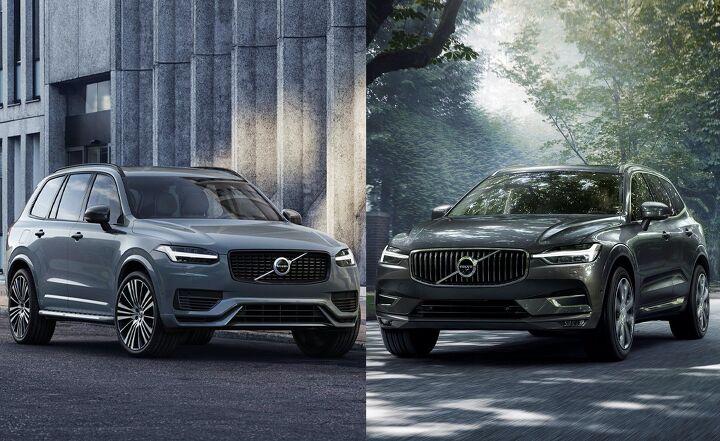































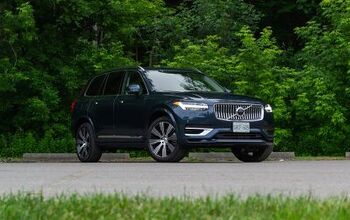




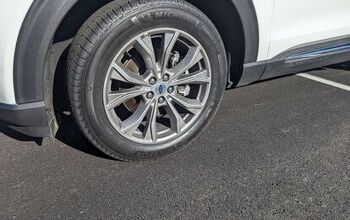
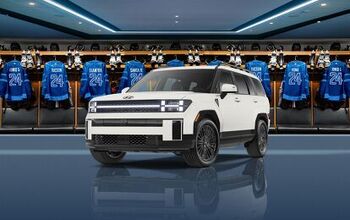


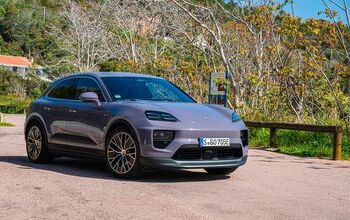
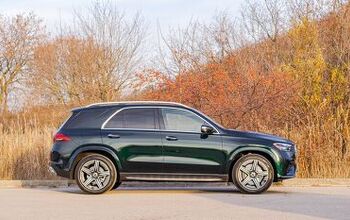
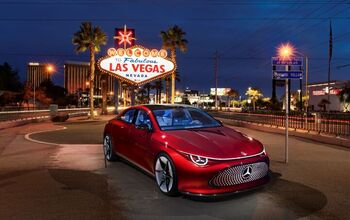


Comments
Join the conversation